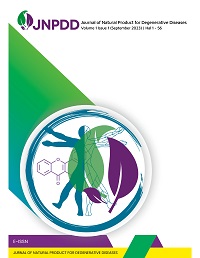Enhanced Efficacy of Kaffir Lime (Citrus hystrix) Essential Oil Spray Gel Against Aedes aegypti Mosquitoes
Abstract views: 311 | PDF downloads: 176
Abstract
The primary mode of dengue disease transmission is by the Aedes aegypti mosquito. The essential oil derived from Kaffir lime (Citrus hystrix) leaves comprises 66.85% beta-citronellal, 6.59% beta-citronellol, 3.90% linalol, and 1.76% citronellol. These constituents exhibit repelling properties. The objective of this study was to develop a spray gel formulation using kaffir lime leaf essential oil to create an efficient repellent. The process involves tearing fresh kaffir lime leaves and subsequently distilling them with distilled water. The distillation procedure yields an essential oil that is subsequently incorporated into a spray gel formulation, with varying concentrations of 1%, 5%, and 10%. Based on the findings of the efficacy test from 3 spray gel formulas through mosquito repelling activity conducted over 6 hours, it can be concluded that all tested formulas exhibited variation in effectiveness in repelling mosquito bites. The efficacy of the protection index against Aedes aegypti mosquito bites is contingent upon the concentration of kaffir lime essential oil in the formulation. There is a positive correlation between concentration and the duration of protection.
Copyright (c) 2023 Journal of Natural Product for Degenerative Diseases

This work is licensed under a Creative Commons Attribution-NonCommercial-ShareAlike 4.0 International License.




